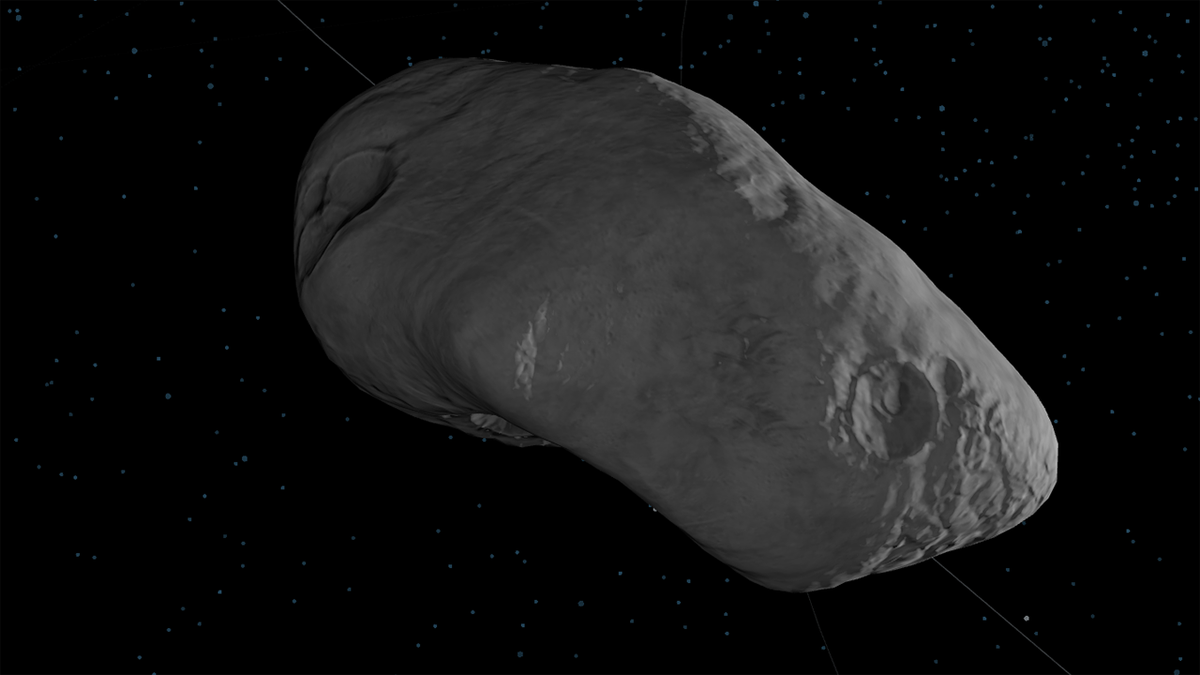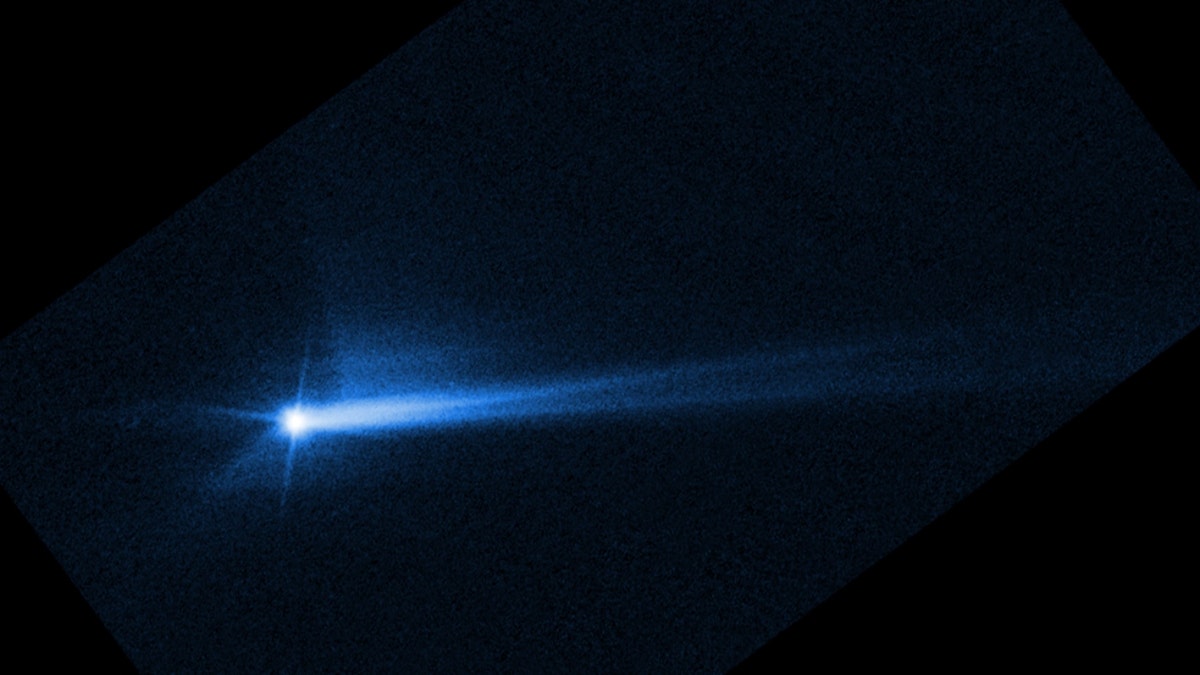NASA DART mission to test-crash spacecraft into asteroid
'The Ordinary Spaceman' author Clayton Anderson explains how the DART Mission could protect our planet from cosmic forces in the future.
A newly-detected asteroid with a diameter of about 161 feet has a "very small chance" of striking Earth on Valentine's Day in 2046, NASA's Planetary Defense Coordination Office said Wednesday.
The space rock, dubbed 2023 DW, was first spotted on Feb. 28 and has about a 1-in-625 chance of impacting our planet, according to the latest estimate by the European Space Agency.
"Often when new objects are first discovered, it takes several weeks of data to reduce the uncertainties and adequately predict their orbits years into the future," NASA tweeted Wednesday. "Orbit analysts will continue to monitor asteroid 2023 DW and update predictions as more data comes in."

The 161-foot asteroid, 2023 DW, has a ‘very small chance’ of striking Earth in 2046. (NASA)
It's been about a decade since the last major asteroid impacted Earth, when a roughly 50-foot wide meteor exploded over Russia's Ural Mountains, shattering windows and injuring more than 1,000 people.
NASA AND DARPA TO DEVELOP NUCLEAR THERMAL ROCKET ENGINE THAT MAY PUT HUMANS ON MARS: REPORT
NASA's Planetary Defense Coordination Office and other agencies around the world have started tracking near-Earth objects and coming up with a game plan for how to knock a potentially devastating asteroid off its path.

This imagery from NASA’s Hubble Space Telescope from Oct. 8, 2022, shows the debris blasted from the surface of Dimorphos 285 hours after the asteroid was intentionally impacted by NASA’s DART spacecraft on Sept. 26. (Credits: NASA/ESA/STScI/Hubble)
The first Double Asteroid Redirection Test (DART) was completed last year, when a "vending machine-sized spacecraft" collided with the asteroid Dimorphos about seven million miles away from Earth, successfully altering its orbit.
CLICK HERE TO GET THE FOX NEWS APP
About 48 tons of harmless meteoritic material strikes Earth every day, the large majority of it burning up as it travels through the atmosphere.




















